Rocks are a versatile, durable, and low-maintenance way to enhance your outdoor space. They can add texture, structure, and visual appeal to any landscape design. It also helps prevent soil erosion on slopes and in garden beds. By integrating rocks into your landscape, you can achieve a polished, sustainable, and elegant outdoor space. Here are 18 creative ways to enhance your landscaping with rocks.
Rock Pathways
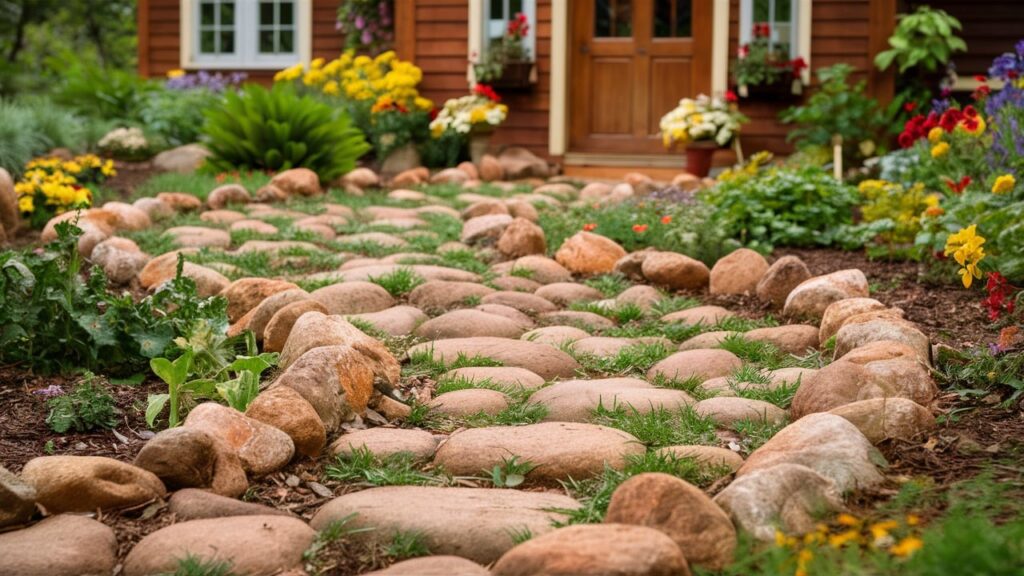
Rock Pathway is a type of outdoor walkway made using various types of stones, such as gravel, pebbles, flagstones, or steppingstones. It is commonly used in outdoor spaces to create an aesthetically pleasing and functional walking surface. A rock pathway can add a natural, elegant, and functional element to your home landscape. Curved rock pathways look more organic and natural, while straight paths give a structured, formal feel. Unlike grass or mulch paths, rock pathways require minimal upkeep. They don’t need mowing, trimming, or frequent replacement.
Rock Garden
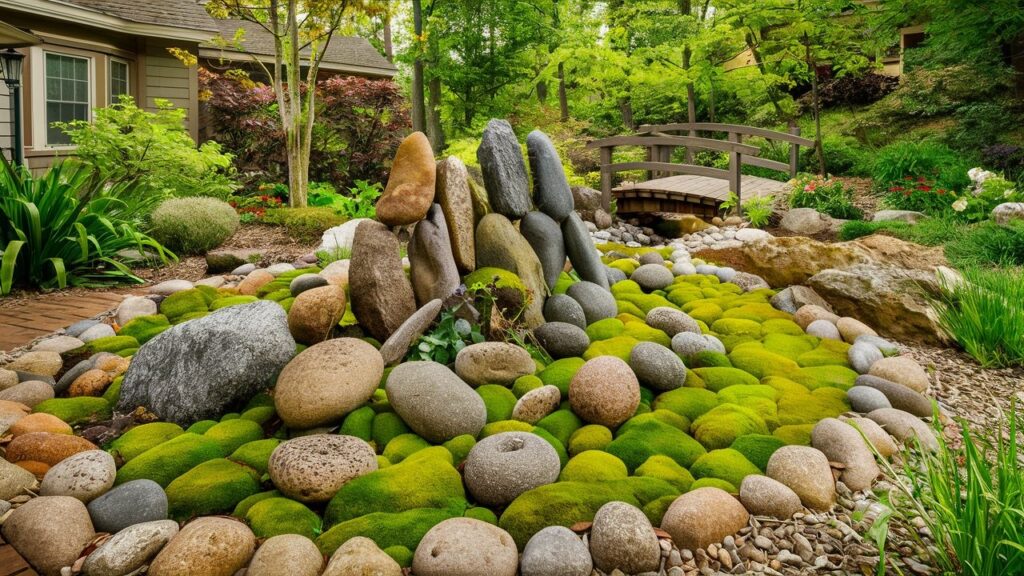
It is a type of garden that features a variety of rocks, stones, and drought-resistant plants, often designed to mimic natural mountainous or arid landscapes. Rock gardens are popular for their aesthetic appeal, low maintenance, and ability to thrive in poor soil conditions. Requires less watering compared to traditional gardens. Ideal for arid and dry climates. Provides a unique and natural look to outdoor spaces and can be customized with different rock types, sizes, and colors. It can provide a habitat for birds, insects, and small animals.
Retaining Wall
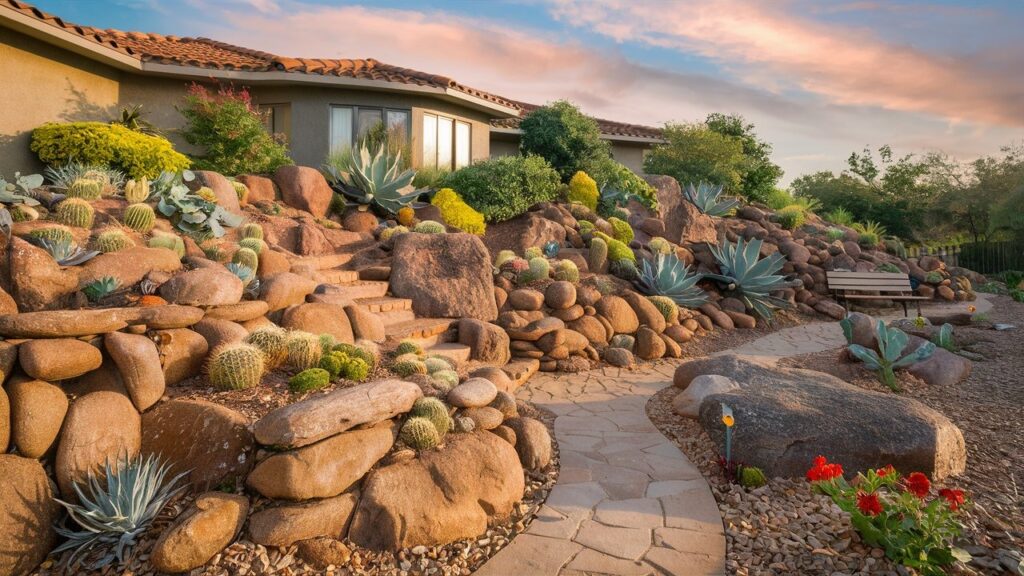
A retaining wall in a home landscape serves both functional and aesthetic purposes. It is a structure designed to hold or retain soil behind it, preventing erosion and providing support to landscapes with different elevations. These walls are commonly used in construction, landscaping, and civil engineering to create level areas, prevent landslides, and manage water drainage. It prevents soil erosion, support roads and highways, manages water runoff and improve aesthetics in landscaping and provides a rustic, organic look.
Rock Water Features
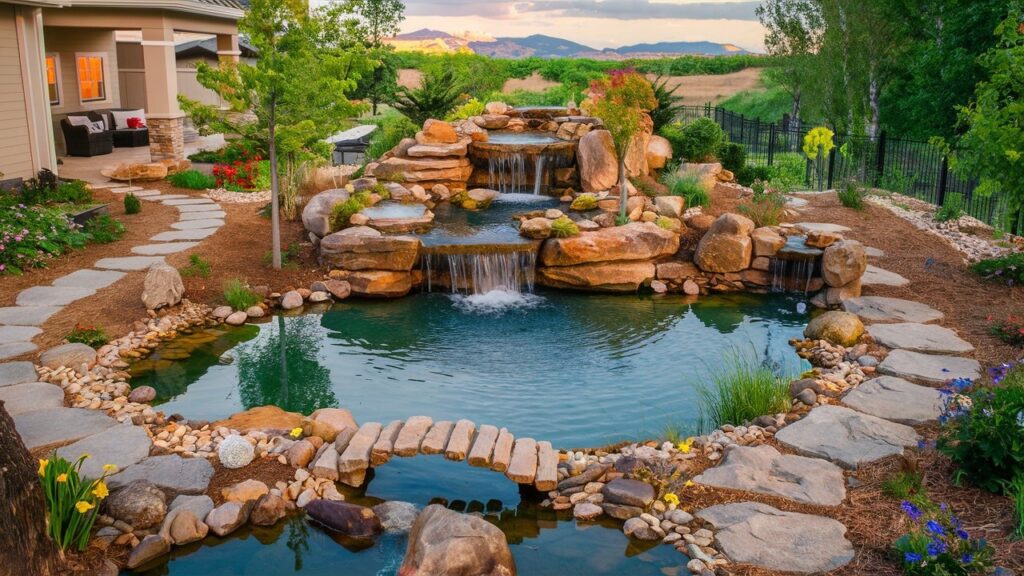
Rock water features can add a serene and natural touch to your home landscape. Rock Water Features are decorative elements in landscaping that incorporate natural or artificial rocks with flowing water. They provide visual interest, soothing sounds, and can attract birds and wildlife. These features can include waterfalls, fountains, ponds, streams, enhancing outdoor and indoor spaces with their aesthetic and soothing appeal. Enhances the beauty of gardens, patios, or indoor spaces with a natural, serene look. The sound of flowing water creates a calming ambiance, reducing stress and promoting relaxation.
Rock Edging
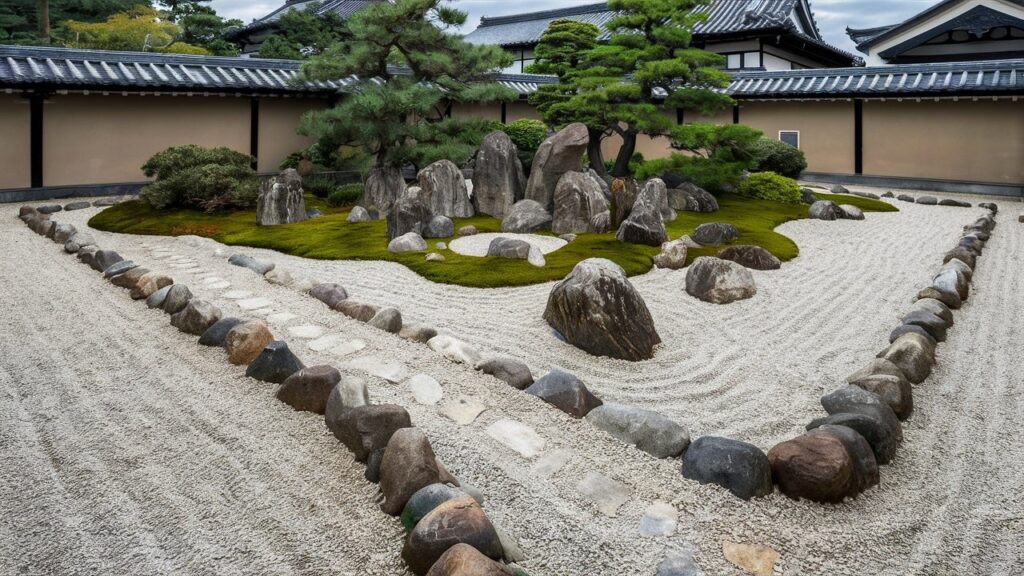
It is a landscaping technique where rocks or stones are used to create a border around gardens, flower beds, pathways, driveways, or lawns. It helps define spaces and adds an aesthetic touch to outdoor areas. Once installed, rock edging requires little to no upkeep. Creates clear separations between different sections of a garden or yard. Allows better water flow and prevents waterlogging in gardens. It enhances the overall look of the garden with a natural and elegant touch. They help reduce weed growth by acting as a barrier between lawn and flower beds.
Zen Garden
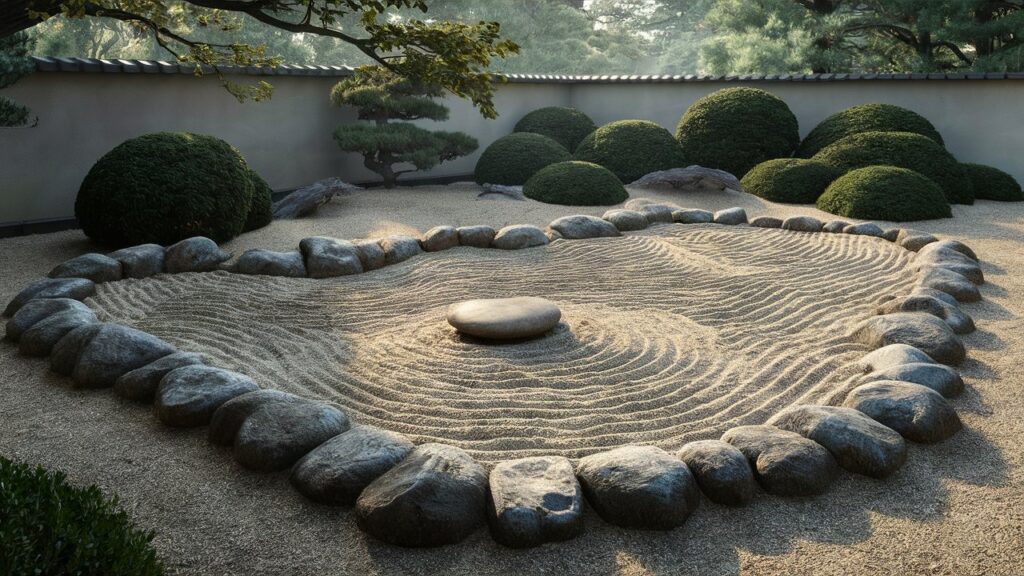
It is a minimalist landscape made of carefully arranged rocks, gravel, sand, and sometimes moss or small plants. It is designed to represent nature in an abstract way, promoting tranquility and meditation. The simplicity and balance of a Zen Garden help calm the mind and reduce anxiety. Unlike traditional gardens, Zen gardens require little upkeep, making them ideal for busy people. Even in small spaces, Zen gardens evoke the beauty of nature and seasons. It adds a minimalist, elegant touch to your landscape. Also, reduces long-term maintenance costs.
Rock Bench
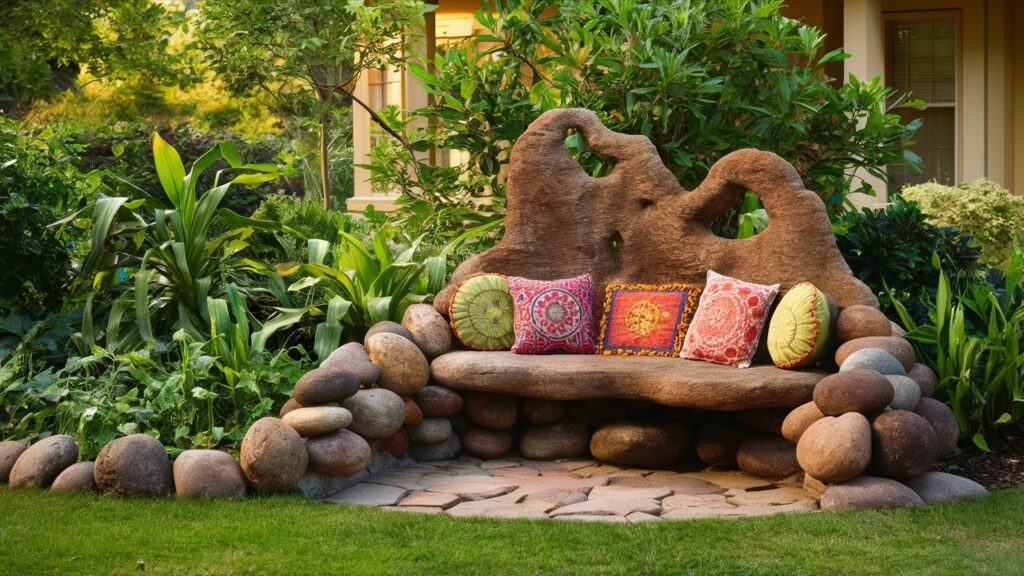
It is a seating structure made of natural stone designed for durability and aesthetics in gardens, parks, or outdoor spaces. Highly durable and weather-resistant, low maintenance, enhances outdoor aesthetics, provides a natural, rustic look. Unlike wood or metal, it doesn’t require regular maintenance, painting, or sealing. Heavy and stable, so it won’t tip over in strong winds or under heavy use. Absorbs heat during the day and can provide warmth in the evening, making it comfortable for cooler nights.
Rock Fire Pit
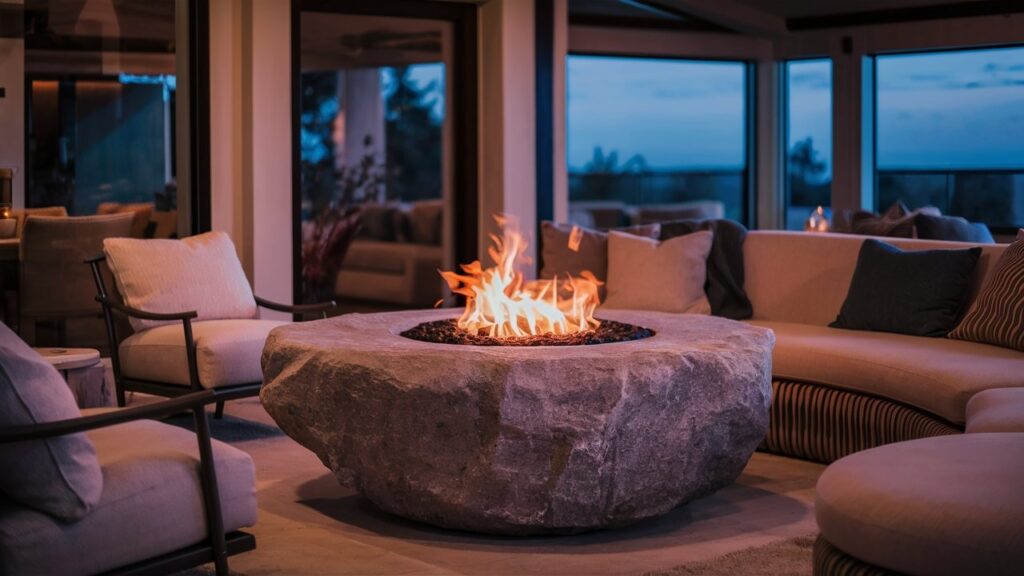
It is an outdoor fire feature made from natural or manufactured stone. It provides a contained space for a fire, typically used for warmth, cooking, or aesthetic appeal in backyards, patios, or campsites. Requires minimal upkeep compared to metal or portable fire pits and reduces fire hazards by keeping flames controlled. A fire pit creates a cozy, inviting atmosphere in your outdoor space, making it perfect for gatherings, relaxation, and entertainment. Rocks are naturally strong, heat-resistant, and weather-resistant, making them a long-lasting and low-maintenance option compared to metal or prefabricated fire pits.
rock Sculptures
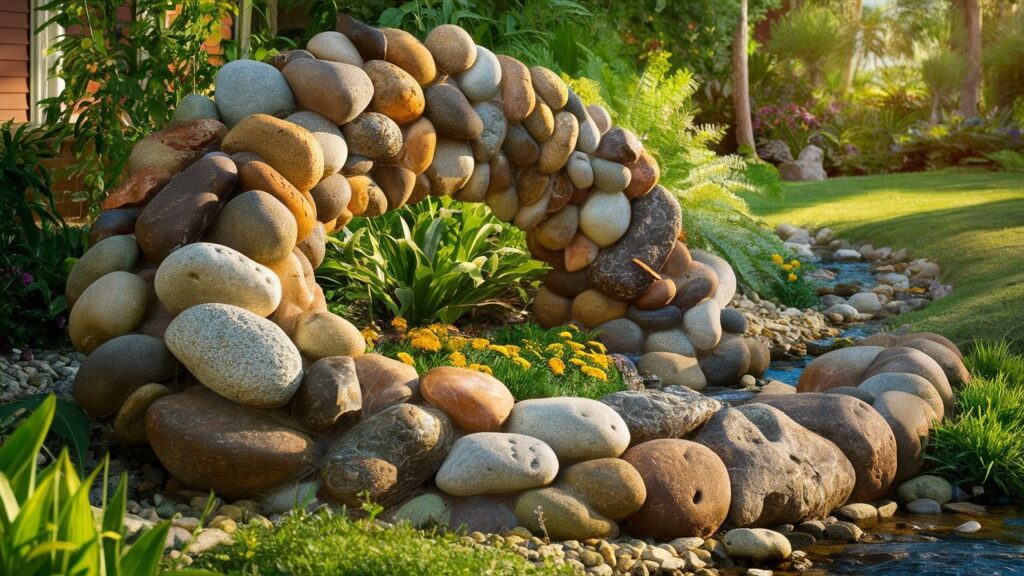
They are decorative and artistic elements carved from natural rock and used in landscaping to enhance aesthetic appeal, create focal points, and add a sense of permanence to outdoor spaces. These sculptures can range from abstract designs to figurative representations, such as statues, fountains, or rock formations, and are commonly placed in gardens, parks, courtyards, and commercial landscapes. Unique and well-placed stone sculptures enhance the overall appeal of a property. Unique textures and colors enhance artistic expression.
Rock Mosaic
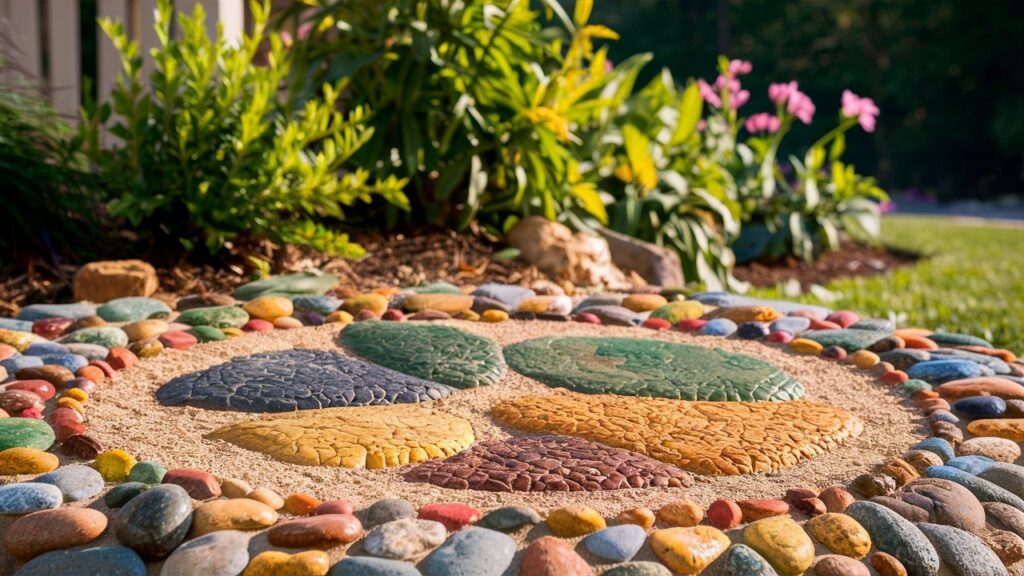
It is a decorative design made by arranging small stones, pebbles, or tiles into patterns or images on pathways, patios, garden walls, or other outdoor surfaces. It enhances outdoor aesthetics by creating unique, artistic focal points. When textured properly, provides better grip and reduces slipping hazards. Requires occasional cleaning and sealing but is otherwise easy to maintain. Can Use small, colorful rocks to create intricate mosaic patterns in garden paths. It can also be arranged into geometric patterns, spirals, or nature-inspired designs like flowers or waves.
French Drainage
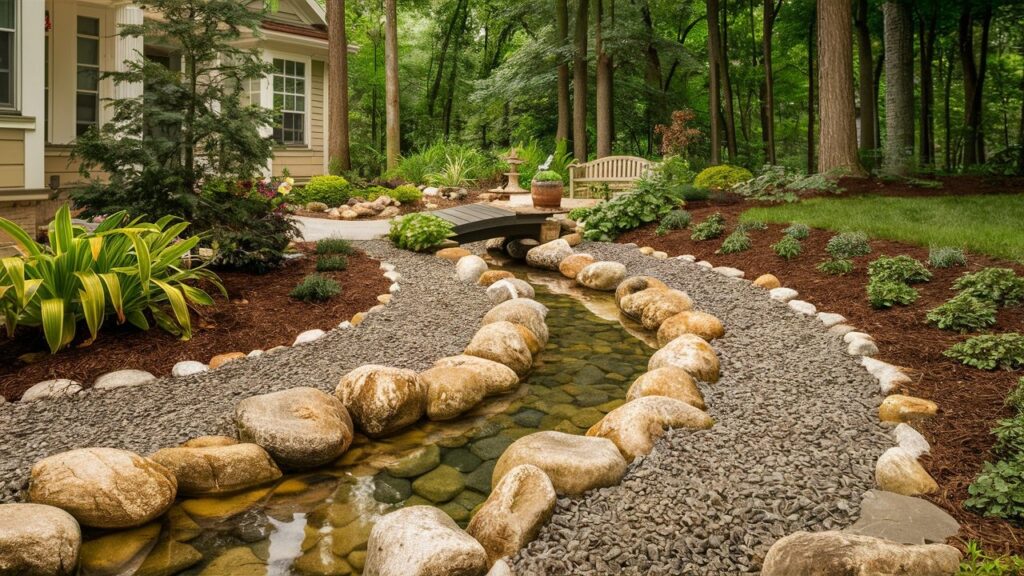
It is a drainage system designed to redirect water away from a specific area, preventing water accumulation and potential damage. It consists of a slightly sloped trench filled with gravel or rock, with a perforated pipe at the bottom. This setup allows water to seep into the pipe and be carried away from the problem area, such as a yard, basement, or foundation. It will make your drainage look modern and appealing. The best rocks for French drains are usually washed gravel, crushed stone, or river rock, as these materials allow for better drainage compared to smaller, compacted stones.
Rock Birdbath
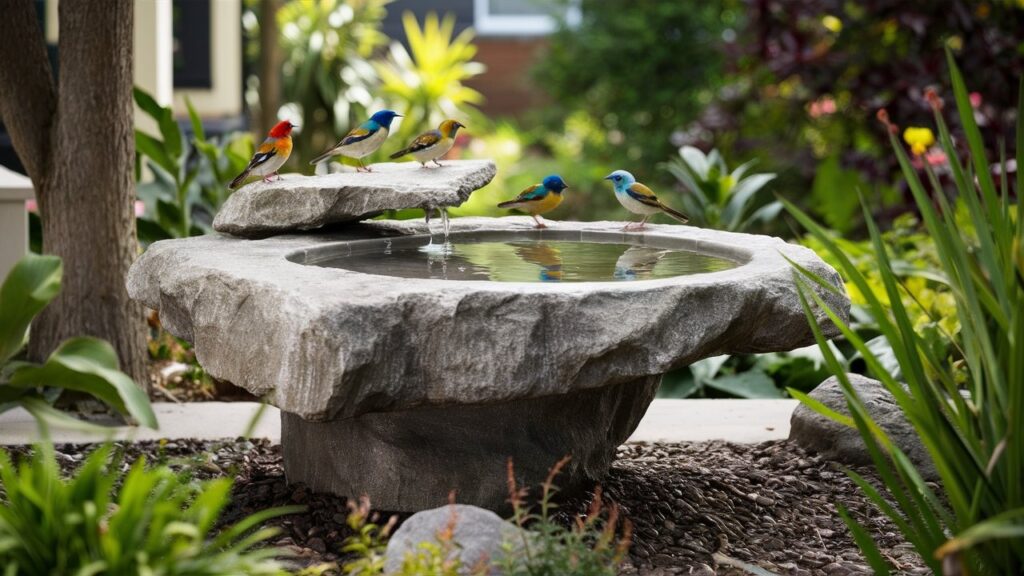
It is a shallow basin made of natural stone or carved from materials like granite, marble, limestone, or concrete. It is designed to hold water and provide birds with a place to drink and bath. Stone birdbaths are a popular choice for gardens due to their durability, natural appearance, and ability to attract wildlife. It blends seamlessly with gardens, rockeries, and natural landscapes. It can withstand temperature changes, making it ideal for year-round use. Provides a reliable water source, especially in dry seasons.
Rock Staircase

They are set of steps made from natural or cut stone, designed to provide a stable and visually appealing way to navigate sloped areas in a yard or garden. These staircases can be constructed using large, flat stones (such as flagstone or bluestone), stacked boulders, or concrete molded to look like natural rock. A well-designed rock staircase enhances curb appeal and adds value to a property. It offers a non-slip surface, especially when rough or textured stone is used. It provides a timeless and rustic look that complements gardens, patios, and trails.
Rock Planters
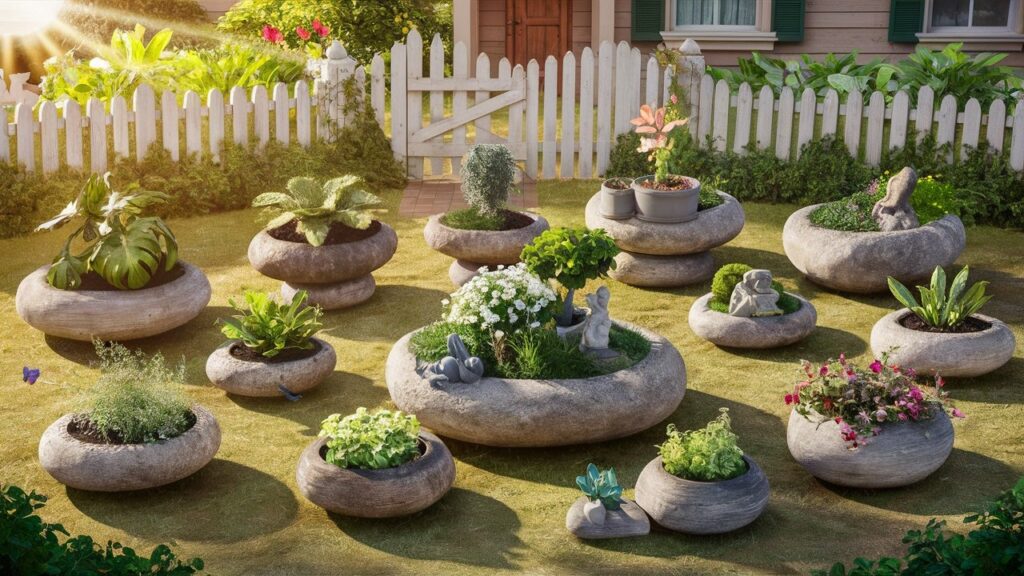
They are durable containers made from natural or artificial stone, used in landscaping to hold plants, flowers, and small shrubs. They come in various shapes, sizes, and designs, enhancing the aesthetics of gardens, patios, and outdoor spaces. They are less likely to tip over in strong winds or accidental bumps. It reduces plastic waste from traditional pots. Rocks don’t degrade over time, making planters long-lasting. Fewer weeds grow compared to traditional soil beds. It helps prevent root rot by allowing excess water to drain naturally.
Rock Sheltered Seating Area
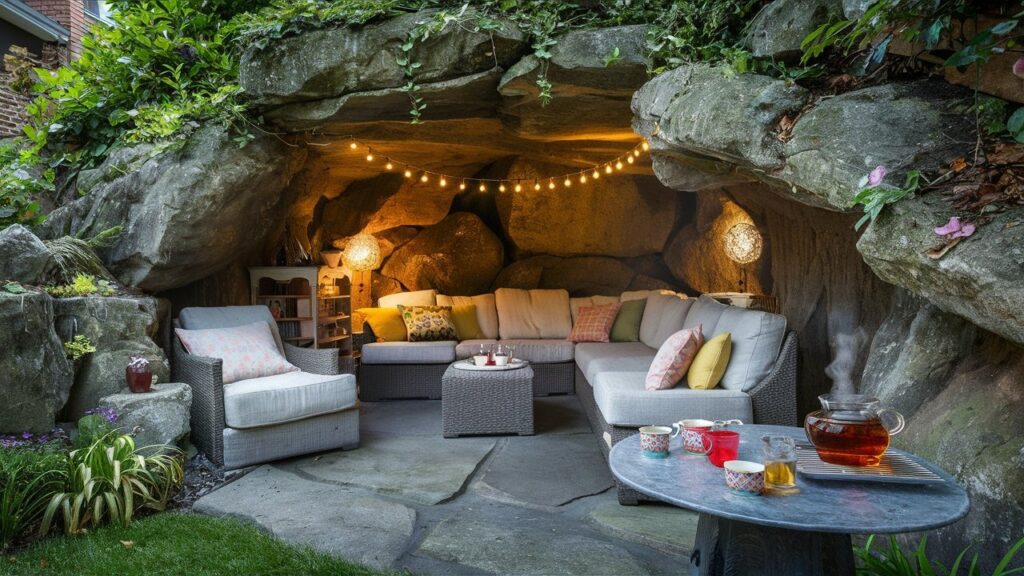
It is a natural or man-made seating space that utilizes rock formations, boulders, or stone-built structures to provide shelter and seating. These areas are often found in natural landscapes, parks, outdoor recreational areas, and even architectural designs. It offers shelter from wind, rain, and direct sunlight, making it a comfortable outdoor seating option. Rocks have thermal mass properties, helping to keep the seating area cool in summer and warm in winter.
Dry Riverbed

It is also known as an arroyo, wadi, or ephemeral stream, is a channel or depression in the ground that temporarily carries water during heavy rains but remains dry for most of the year. These formations are commonly found in arid and semi-arid regions. It helps manage stormwater by directing excess rainwater, reducing flooding. It allows water to percolate into the ground, replenishing underground aquifers. It adds visual interest to a yard or garden. It complements plants, pathways, and other garden features. It filters water and prevents contaminants from reaching storm drains.
Rock Mulch
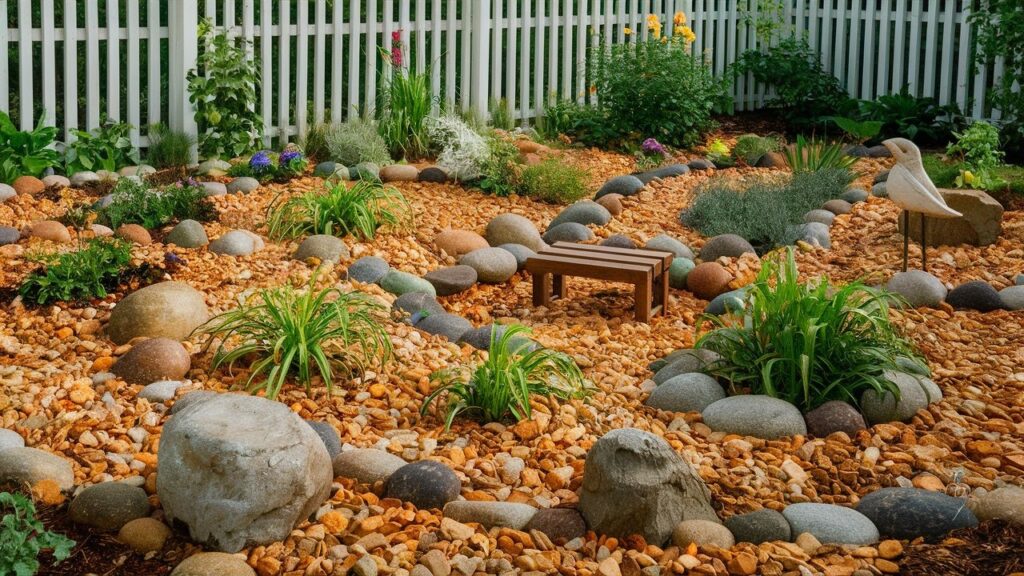
It refers to the use of small stones, gravel, or crushed rock as a ground cover instead of organic mulch like wood chips or bark. It is commonly used in garden beds, around trees, pathways, and xeriscaping (low-water landscaping). Unlike organic mulch, rock mulch does not decompose, so it lasts for many years with minimal maintenance. It requires less frequent replacement, reducing long-term costs and effort. It helps with moisture retention while also improving drainage in certain conditions. It reduces soil erosion in sloped areas. Creates a strong barrier that reduces weed growth when combined with landscape fabric.
Boulder Features
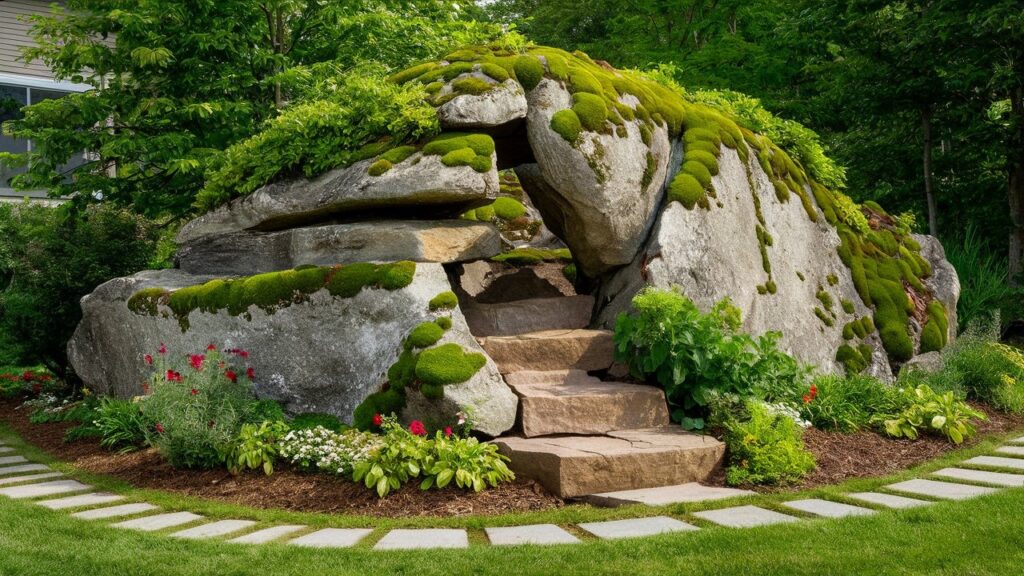
Boulder features in landscaping refer to the strategic placement of large natural stones to enhance the aesthetics and functionality of outdoor spaces. These boulders can be used for decorative purposes, as retaining walls, or as focal points in gardens, patios, and water features. Boulders add a natural, timeless look to landscapes, making them visually striking and unique. They provide stability to landscapes, reinforcing retaining walls and pathways. A well-placed boulder landscape can boost curb appeal. It can be used as natural seating areas in gardens.

